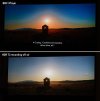mike_m
Active Member
This isn’t strictly a Freeview question – my apologies!
Last year I recorded the BBC series ‘English’ , but didn’t get round to watching it till last week, when we found that one episode failed to record – so we watched that episode on iPlayer. Having been blown away by the show’s superb photography when played on an HDR FoxT2, we were massively disappointed with how it looked on iPlayer – highly over-saturated with colours bleeding everywhere. I checked all the colour settings on the TV for both inputs, and they were as normal – and other iPlayer programmes seem to be fine. However, one thing I noticed was that on iPlayer, ‘English’ was labelled as UHD, and there seemed to be no option to watch in ordinary HD.
Has anyone else had this problem with UHD on iPlayer?

Last year I recorded the BBC series ‘English’ , but didn’t get round to watching it till last week, when we found that one episode failed to record – so we watched that episode on iPlayer. Having been blown away by the show’s superb photography when played on an HDR FoxT2, we were massively disappointed with how it looked on iPlayer – highly over-saturated with colours bleeding everywhere. I checked all the colour settings on the TV for both inputs, and they were as normal – and other iPlayer programmes seem to be fine. However, one thing I noticed was that on iPlayer, ‘English’ was labelled as UHD, and there seemed to be no option to watch in ordinary HD.
Has anyone else had this problem with UHD on iPlayer?


